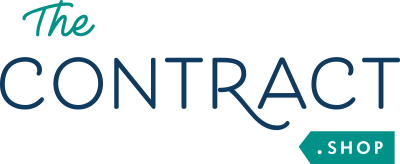Your Cart is Empty
Shop confidently - 14-day no-hassle return policy
Shop confidently - 14-day no-hassle return policy
Shop confidently - 14-day no-hassle return policy
This blog post proudly contains affiliate links to products we use everyday on this site.
Being handicap accessible isn't just reserved for IRL businesses anymore-- there are plenty of disabled and neurodivergent populations browsing your site as we speak.
The requirements around accessibility are rapidly changing and improving, even as at the time we write this, "neurodivergent" seems to be a term so new even our text editor app doesn't recognize it.
Pssst.... for a nifty glossary, skip to the end.
If adding yet another thing to your small business plate makes your head spin, as usual, we're here to help you find peace of mind.
While there's a lot of people getting anxious and upset over being sued for good reasons, the only businesses that really need to worry are those that have 15 or more employees, or those businesses who serve the general public such as boutiques who rely on strangers to become customers.
Even if at first sight becoming compliant does not apply to you, you should still take basic steps because the laws could quickly change. Read: "quickly change" means someone is getting sued, and we don't want that to be you.
Plus, it's important to care about all of our customers-- not just the ones who are privileged enough to enjoy a life free from disability.
If you're still not convinced, let me be really clear here: even if ADA laws do not apply to you based on what I've shared here, they will soon and it will most likely happen at an inconvenient time for you.
In the meantime, you could be cancelled, wind up with frustrated emails in your inbox or even worse, get sued.
Let me tell you what happens when someone gets sued and the suit is eventually found to have no merit (such as if you're found to be a business that didn't technically have to have these accessibility features in place): you still have to answer thatcomplaint.
Read: you still have to spend a boatload of money on a law firm to answer the lawsuit lodged against you or your business (or both if you haven't separated out your business from your personal life).
If you're not all about that drama in your life, and you want to do the right thing, read on friend.
First, the shocking news: there is no one pre-approved list stamped into law of what a site needs to be ADA compliant.
Here's one thing we definitely know though: your terms and conditions alone, no matter how good they are, are not able to protect you if your website is non-compliant.
In order to be compliant, a website needs to have...
The most common way to do this is to add an app, as asking a business owner to design a new site from scratch would be an undue burden.
Click here to check out my favorite accessibility app that is easy to install directly on your site. The best part is, it provides me with monthly audits and lawsuit support if I ever were to be sued.
If an app isn't available to you for whatever reason, going through the other steps on this page will help to reduce your liability because you'll be seen as making "reasonable efforts" to comply with the ADA and any other local accessibility laws in your country.
In areas where your app won't reach, like in presentations and on Instagram, it's important to keep this golden rule of accessibility in mind: make your text easy to read.
Not only does this make it possible for visually handicapped viewers to see, it also makes it possible for text-to-talk tools to turn that into speech for them.
As an added bonus, if your text is easy to read, it's easier for anyone enjoying it to use and put into practice which is the whole point of you taking the time to create that communication tool, like a carousel post on Instagram.
Luckily, my app does this for me. But if I wanted to add to it or change it, I could. Since this is already done for you if you're using an app on your site, you don't need to worry about this, but you should read it!
If you are not using an app, you can use this blog post to inform the statement you craft. The most important thing is that it is inclusive, informative and truthful to state your commitment to accessibility and the steps you're taking to do that.
When I can, I like to record blog posts or newsletters for audio play back. I have to admit-- this is time consuming and I don't always get to it. I am currently looking for a more time effective way to do this by hiring an editor or by just uploading the imperfect (but close) audio of me reading it for my audience.
I looked into hiring narrators, but it was too expensive to be a good option for my shop (currently for the length of my emails/blogs I'm looking at $1000+ per post).
Luckily, it is much easier to create written alternatives to audio than it is to go the other way around. If you have a video or audio (like a podcast) that you'd like to turn into text, you can use a tool like Otter.ai to transcribe it, or to create captions.
Just a quick note: it is a lot easier for people to read closed captions than a transcript. Please consider turning your podcast into video with a thumbnail and a podcast channel on YouTube so people can "read along" when listening is not an option for them.
This is an oldie but a goodie. For visually impaired readers, alt tags give a description of the image they're looking at.
As an added bonus, alt text helps improve your SEO.
You can even add alt text to your Instagram posts too now!
In your header code, take a minute to identify what language your site is written in. This helps users who must use text readers, so those devices can support their users properly.
An easy way to help your handicapped site users is to offer adaptive text that intuits their typing based on popular searches. For example, on our shop, when you start typing a word the browser automatically helps you reach that product faster.
Here's an example:

When in doubt, keep things on your site simple. Pare down your site with easy-to-navigate menus and intuitive design.
This will make it easier for all users to find what they're looking for, especially someone with a disability.
10. Carry Your Compliance Elsewhere
Make sure you're carrying your compliance throughout your channels. Just because your website is compliant, it doesn't mean you can ignore social media or third party funnel apps that host your landing pages.
Use this checklist as you learn more about becoming accessible to make sure you're implementing as many steps as you can throughout your channels.
It is already so hard to be handicapped in a world that's not built for handicapped people. By paying attention to this often overlooked population, not only will you be helping yourself, you'll also be helping to create fans for life because you took the time to care.
We have gotten so many emails, Instagram tags and other mentions since implementing an app on our site that makes it easier for all shoppers to access our site.
This wasn't something I was expecting, but as we get happy mail from them, it is a reminder how far behind many others are. If we are ever faced with a compliance challenge, I feel good knowing we've served so many people already as we constantly look for more ways to improve.
It makes it that much harder for people to sue you when you proactively care about helping them.
Plus, from a liability standpoint, if you follow this checklist, you've "taken steps to mitigate." This means that you're trying. And if your "try" is above the standard of care that the rest of the industry is operating at, it's very hard to find you negligent and/or non-compliant.
My monthly audits are provided free by the app I use for my accessibility. However if you've chosen not to add a tool like this to your site, you are always welcome to seek out and
Personally I trust the AI of this Series A backed startup, plus the increased frequency, more than a singular individual doing a costly checkup once a year, but having some sort of accessibility audit is better than none.
Finally, one of the best things you can do to help prevent a lawsuit is to hire handicapped, disabled and neurodivergent people when you're considering your next opening.
Unless you're hiring them specifically for an accessibility audit, you shouldn't expect them to be an expert or contribute in this subject area.
However, I've found that having handicapped people in my life helps me to see things from their perspective and to constantly serve as a reminder how I can continue to improve in this area to "stay ahead of the curve" so to speak.
A great place to find hires like this is in our K Club™ Directory, located here.
Let's say you're finding this list a little too late to implement, and you're here because a scary email has found its way to you.
Personally, I would not even respond until I received more than one email from the same firm regarding this (assuming the firm and the request even looks credible-- a credible email will ask if you're represented by an attorney).
Unfortunately there is a cottage industry of lawyers popping up looking to intimidate small business owners for easy money by preying on their fear. Often, they are just fishing to see who takes the bait to respond.
But let's assume this is indeed a credible firm and email.
You can use this helpful language as a template to get started writing back to the lawyers (note: this is not legal advice and The Contract Shop® is not a law firm).
Hi [name],
We've received your email dated [date] in regards to accessibility. We kindly ask that you give us a reasonable amount of time to make any necessary updates to our site(s).
[your sign off and name]
A good tip to keep in mind as you're writing emails to lawyers is to delete anything explanatory, such as "we're trying..." or "I'm sorry, ____."
Even if they seem nice, they are not your friend and they are not acting in your best interest! They are always acting in their client's best interest.Always.
-------
Glossary
ADA - Americans with Disabilities Act of 1990
Complaint- this is what a lawsuit is actually called. Saying, "she filed the lawsuit" is the same meaning as "she filed the complaint."
Neurodivergent- a person who interprets information, mood, social situations and life experiences differently due to a condition such as autism, ADHD, dyslexia, depression and/or other mental health concerns
Comments will be approved before showing up.

Take our 1-minute Business Quiz and get personalized advice delivered straight to your inbox!
